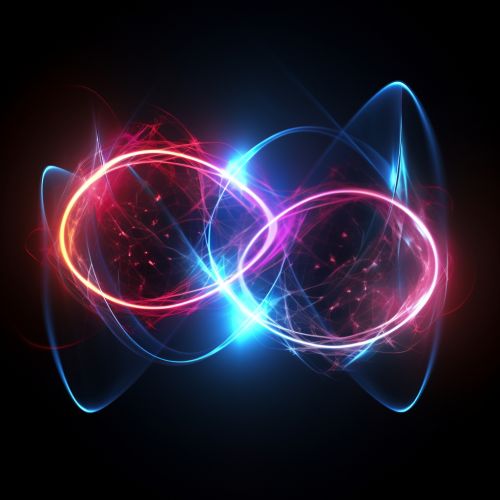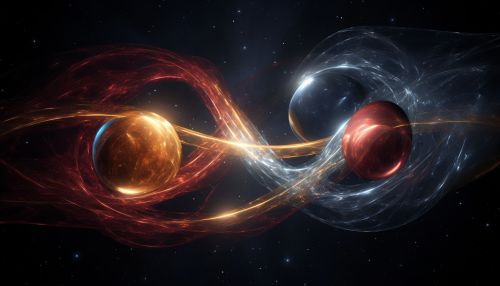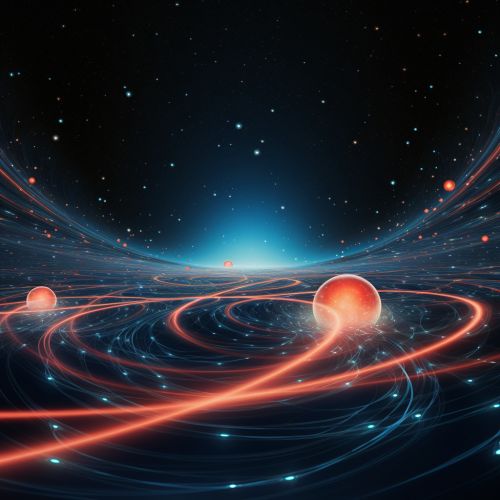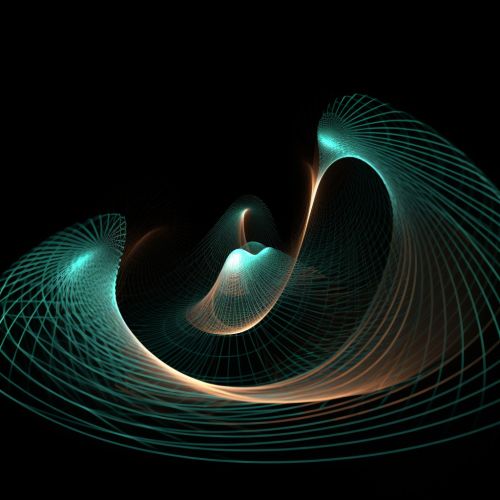The Physics of Quantum Entanglement and its Implications
Introduction
Quantum entanglement is a physical phenomenon that transpires when pairs or groups of particles interact in such a way that the quantum state of each particle becomes inseparable from the state of the others. This correlation persists regardless of the distance separating the particles, be it an inch or a light-year, challenging our conventional understanding of spatial separation.


Quantum Mechanics and Entanglement
Quantum mechanics, the branch of physics that grapples with the smallest particles of the universe, provides the theoretical underpinning for understanding quantum entanglement. The principles of quantum mechanics diverge significantly from classical physics, which describes the world as we perceive it in everyday life. In the quantum realm, particles can exist in multiple states simultaneously, a phenomenon known as superposition. Furthermore, these particles can become entangled, leading to correlations between their properties that persist regardless of distance.
The concept of entanglement was first proposed by Albert Einstein, Boris Podolsky, and Nathan Rosen in 1935, in what is now referred to as the Einstein-Podolsky-Rosen (EPR) paradox. They described it as "spooky action at a distance," expressing their unease with the concept.


Mathematical Description of Entanglement
The mathematical framework of quantum mechanics employs a wave function to describe the state of a system of particles. For entangled particles, this wave function cannot be separated into individual components – it is a single, unified entity. This implies that the state of one particle is intrinsically tied to the state of the other, irrespective of the distance between them.
In more technical terms, if we have two entangled particles A and B, the wave function for the system is given by a superposition of states. For instance, if the particles are spin-1/2 particles (like electrons), the wave function might be something like:
ψ = a|↑A↓B⟩ + b|↓A↑B⟩
Here, |↑A↓B⟩ represents the state where particle A is spin-up and particle B is spin-down, and |↓A↑B⟩ is the state where A is spin-down and B is spin-up. The coefficients a and b determine the probabilities of these states.


Measurement and Entanglement
One of the most intriguing aspects of entanglement is what transpires when a measurement is made. According to the Copenhagen interpretation of quantum mechanics, the act of measurement causes the wave function to collapse to a single state. For entangled particles, this implies that measuring the state of one particle instantly determines the state of the other, regardless of the distance separating them.
This leads to some very counterintuitive results. For example, if two entangled particles are sent in opposite directions and then measured, the results will always be correlated, even though there is no conceivable way for the particles to communicate with each other. This phenomenon has been confirmed by numerous experiments, most notably the Bell's inequality tests.


Implications of Quantum Entanglement
Quantum entanglement has profound implications for our understanding of the universe. It challenges our intuitive notions of reality and locality, suggesting that the universe is fundamentally interconnected in ways that we do not fully comprehend.
Moreover, quantum entanglement has practical applications. It is a critical component of quantum computing, where entangled qubits can be used to perform computations far more efficiently than classical bits. It also plays a role in quantum cryptography, where it can be used to create secure communication channels that are immune to eavesdropping.


